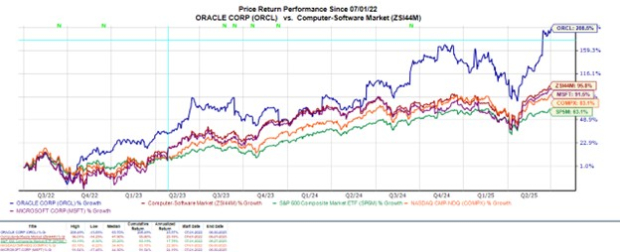Realty Income (NYSE: O) shares have struggled over the past year — they’re down over 10%. However, the real estate investment trust (REIT) pays an attractive monthly dividend and just turned in solid first-quarter results.
Let’s take a look at its most recent quarterly report, the safety of its dividend, and whether now is the time to buy the stock.
Solid Q1 results
Realty Income saw its first-quarter revenue surge 33% to $1.26 billion, helped by its acquisition of Spirit Realty in January. Same-store rental revenue grew 0.8% in the quarter, while its occupancy rate was 98.6%.
Following the acquisition of Spirit, nearly 80% of Realty Income’s annual contracted rent was in retail properties, with nearly 15% now in industrial properties. Over 5% of its annual contracted rent was from gaming and other properties. Industrial properties showed strong same-store rental growth in the quarter, up 2.9%. Retail same-store rental growth was weaker, up only 0.4%, hurt by movie theater closures. The diversification Realty Income is getting from the Spirit acquisition appears to be paying off.
Realty Income was also busy investing in properties in the quarter, making $598 million in property investments. Over half of the REIT’s investments were in the U.K. and Europe, where it said it was getting an 8.2% weighted average cash yield, which was above the 7.3% quarterly average it got in the U.S.. Realty Income has been able to get increasing capitalization rates (cap rates) with new investments, although rising cap rates have hurt the value of its older properties, which is why the stock has struggled in the past few years. It invested in properties not only in the retail space but also in the industrial and data center space, as it continues to diversify into other others.
Increasing cap rates, however, have also allowed the company to command higher rents in many cases when leases come up for renewal. For the quarter, the company had a rent recapture rate of 104.3% on properties it released.
The company’s adjusted funds from operations (AFFO) per share climbed 5% to $1.03. AFFO is a measurement of the cash flow a REIT can generate from its operations. Realty Income prefers AFFO because it is more standardized across the REIT industry, since the metric is not affected by differing depreciation assumptions among REITs.
Realty Income largely maintained its earlier guidance for the full year. It is still looking to invest about $2 billion in new property investments, while getting a 1% increase in same-store rental income and having over 98% occupancy. It also reiterated its forecast for full-year AFFO per share of between $4.13 to $4.21.
A safe and growing dividend
During the quarter, Realty Income paid $636.5 million in dividends, while its total AFFO was $864.2 million, a difference of $226.4 million. Its AFFO payout ratio improved from 76.7% last year to 74.8%. In other words, Realty Income’s cash flow adequately covers its dividend, and it has ample room to further increase its payout.
In March, the company raised its dividend to an annualized payout of $3.084 per share. It marked Realty Income’s 106th consecutive quarterly dividend increase and 646th straight monthly dividend increase. The company paid 77 cents in quarterly dividends in the first quarter, which was a 2.4% increase compared to Q1 of last year.
Given the general overall make-up of its real estate portfolio, Realty Income’s dividend looks very safe. Its tenants tend to be less economically sensitive retailers, and it uses long-term triple net leases, where tenants are responsible for utilities, property taxes, and maintenance expenses.

Image source: Getty Images.
A good time to buy the stock
Rising cap rates, which have stemmed from higher interest rates, have hurt Realty Income’s stock. However, with interest rate hikes now appearing to be over and the Fed currently holding rates constant (with a longer term view to lower them), this should be good for the property values within the REIT’s property portfolio.
In conjunction, it’s growing its AFFO per share and finding excellent investment opportunities in the current environment, especially in Europe. Its acquisition of Spirit, meanwhile, added just a bit of diversity to its property portfolio.
With a solid 5.6% yield and a monthly dividend payout, now is a great time to buy shares in the high-yield REIT.
Should you invest $1,000 in Realty Income right now?
Before you buy stock in Realty Income, consider this:
The Motley Fool Stock Advisor analyst team just identified what they believe are the 10 best stocks for investors to buy now… and Realty Income wasn’t one of them. The 10 stocks that made the cut could produce monster returns in the coming years.
Consider when Nvidia made this list on April 15, 2005… if you invested $1,000 at the time of our recommendation, you’d have $550,688!*
Stock Advisor provides investors with an easy-to-follow blueprint for success, including guidance on building a portfolio, regular updates from analysts, and two new stock picks each month. The Stock Advisor service has more than quadrupled the return of S&P 500 since 2002*.
See the 10 stocks »
*Stock Advisor returns as of May 6, 2024
Geoffrey Seiler has no position in any of the stocks mentioned. The Motley Fool has positions in and recommends Realty Income. The Motley Fool has a disclosure policy.
The views and opinions expressed herein are the views and opinions of the author and do not necessarily reflect those of Nasdaq, Inc.






